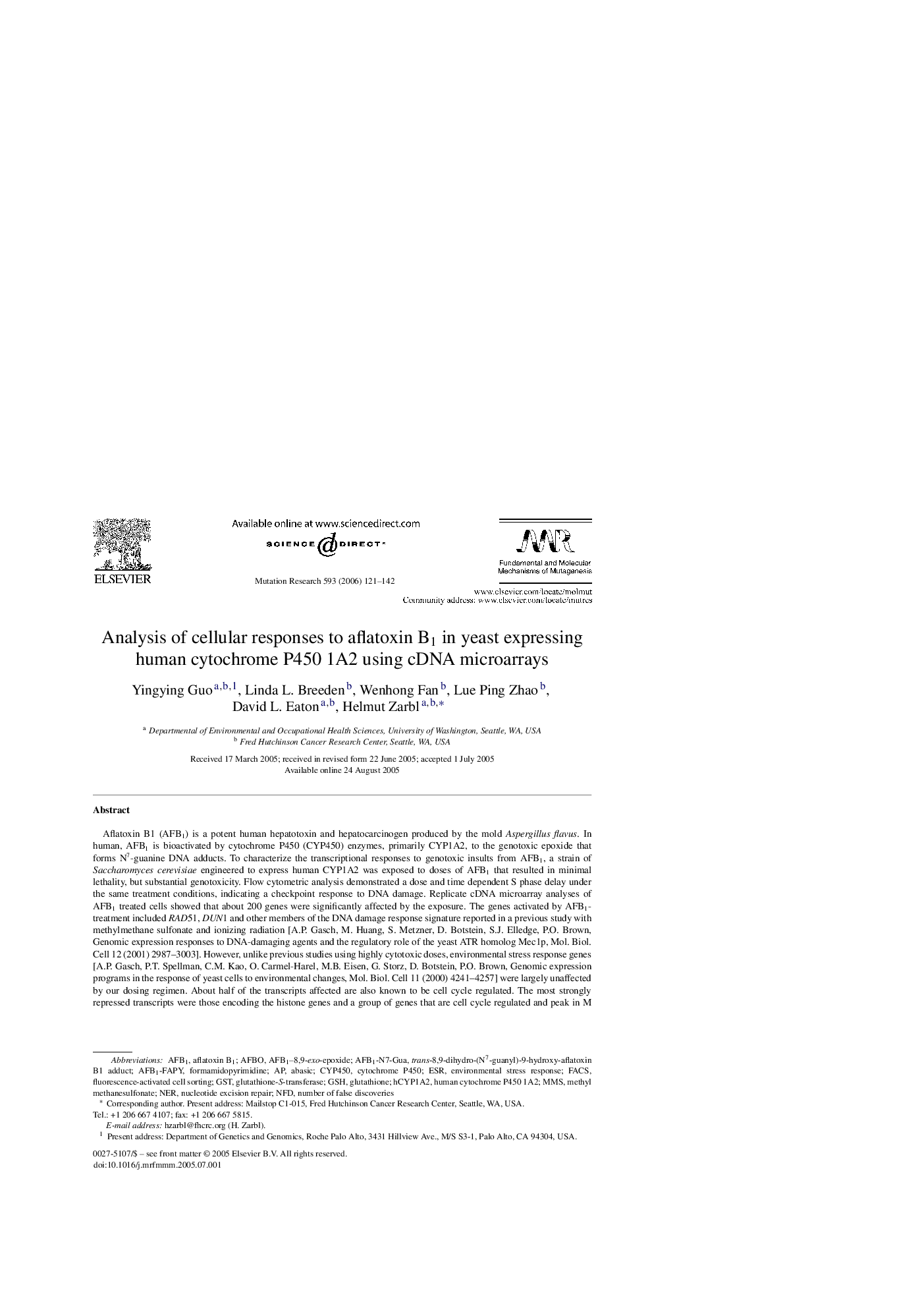| کد مقاله | کد نشریه | سال انتشار | مقاله انگلیسی | نسخه تمام متن |
|---|---|---|---|---|
| 2147727 | 1548425 | 2006 | 22 صفحه PDF | دانلود رایگان |

Aflatoxin B1 (AFB1) is a potent human hepatotoxin and hepatocarcinogen produced by the mold Aspergillus flavus. In human, AFB1 is bioactivated by cytochrome P450 (CYP450) enzymes, primarily CYP1A2, to the genotoxic epoxide that forms N7-guanine DNA adducts. To characterize the transcriptional responses to genotoxic insults from AFB1, a strain of Saccharomyces cerevisiae engineered to express human CYP1A2 was exposed to doses of AFB1 that resulted in minimal lethality, but substantial genotoxicity. Flow cytometric analysis demonstrated a dose and time dependent S phase delay under the same treatment conditions, indicating a checkpoint response to DNA damage. Replicate cDNA microarray analyses of AFB1 treated cells showed that about 200 genes were significantly affected by the exposure. The genes activated by AFB1-treatment included RAD51, DUN1 and other members of the DNA damage response signature reported in a previous study with methylmethane sulfonate and ionizing radiation [A.P. Gasch, M. Huang, S. Metzner, D. Botstein, S.J. Elledge, P.O. Brown, Genomic expression responses to DNA-damaging agents and the regulatory role of the yeast ATR homolog Mec1p, Mol. Biol. Cell 12 (2001) 2987–3003]. However, unlike previous studies using highly cytotoxic doses, environmental stress response genes [A.P. Gasch, P.T. Spellman, C.M. Kao, O. Carmel-Harel, M.B. Eisen, G. Storz, D. Botstein, P.O. Brown, Genomic expression programs in the response of yeast cells to environmental changes, Mol. Biol. Cell 11 (2000) 4241–4257] were largely unaffected by our dosing regimen. About half of the transcripts affected are also known to be cell cycle regulated. The most strongly repressed transcripts were those encoding the histone genes and a group of genes that are cell cycle regulated and peak in M phase and early G1. These include most of the known daughter-specific genes. The rapid and coordinated repression of histones and M/G1-specific transcripts cannot be explained by cell cycle arrest, and suggested that there are additional signaling pathways that directly repress these genes in cells under genotoxic stress.
Journal: Mutation Research/Fundamental and Molecular Mechanisms of Mutagenesis - Volume 593, Issues 1–2, 29 January 2006, Pages 121–142